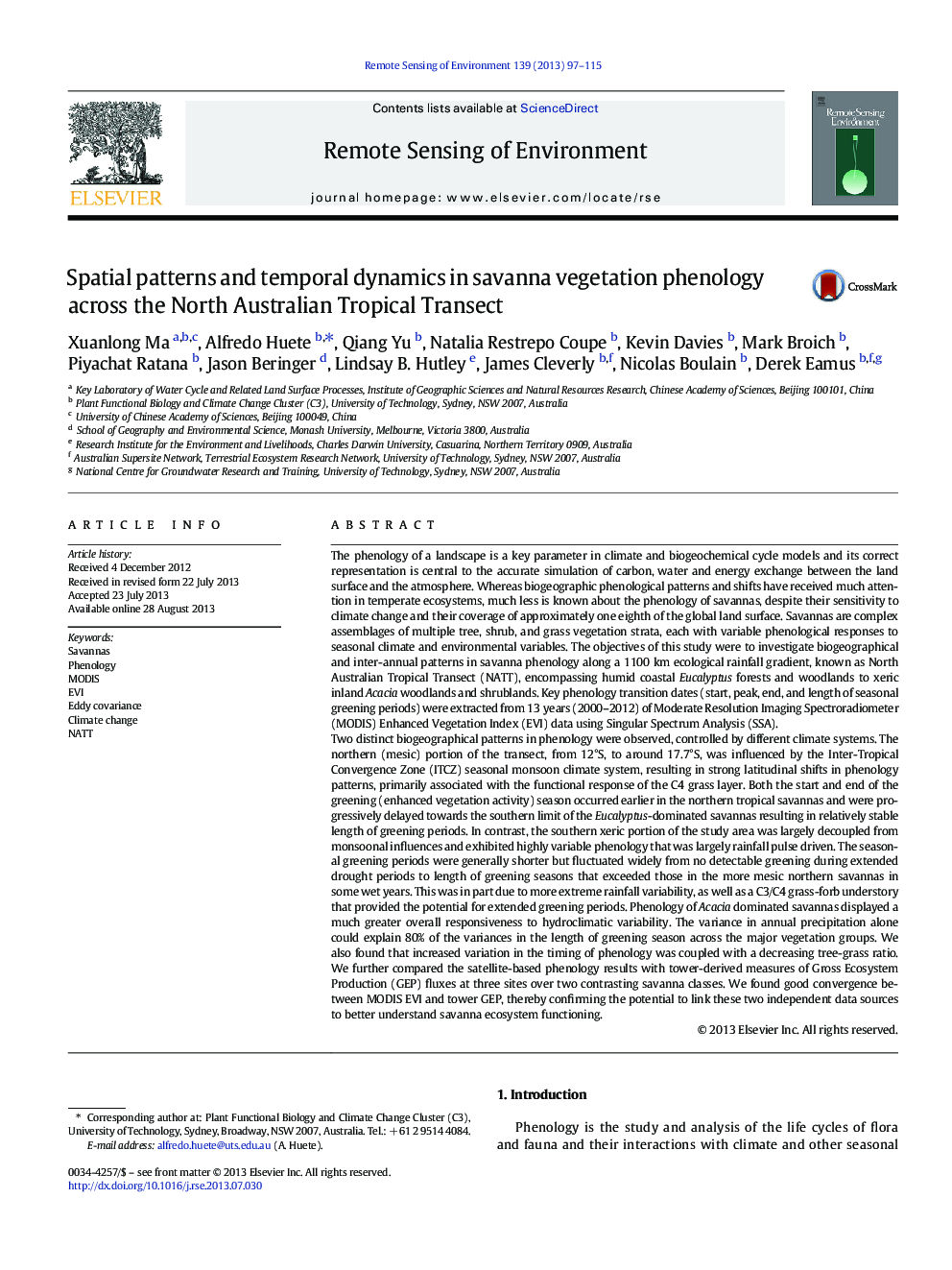| کد مقاله | کد نشریه | سال انتشار | مقاله انگلیسی | نسخه تمام متن |
|---|---|---|---|---|
| 6347123 | 1621261 | 2013 | 19 صفحه PDF | دانلود رایگان |
عنوان انگلیسی مقاله ISI
Spatial patterns and temporal dynamics in savanna vegetation phenology across the North Australian Tropical Transect
ترجمه فارسی عنوان
الگوهای فضایی و دینامیک زمانی در فنولوژی گیاهان صخره ای در سراسر ترانک گرمسیری استرالیا
دانلود مقاله + سفارش ترجمه
دانلود مقاله ISI انگلیسی
رایگان برای ایرانیان
کلمات کلیدی
موضوعات مرتبط
مهندسی و علوم پایه
علوم زمین و سیارات
کامپیوتر در علوم زمین
چکیده انگلیسی
Two distinct biogeographical patterns in phenology were observed, controlled by different climate systems. The northern (mesic) portion of the transect, from 12°S, to around 17.7°S, was influenced by the Inter-Tropical Convergence Zone (ITCZ) seasonal monsoon climate system, resulting in strong latitudinal shifts in phenology patterns, primarily associated with the functional response of the C4 grass layer. Both the start and end of the greening (enhanced vegetation activity) season occurred earlier in the northern tropical savannas and were progressively delayed towards the southern limit of the Eucalyptus-dominated savannas resulting in relatively stable length of greening periods. In contrast, the southern xeric portion of the study area was largely decoupled from monsoonal influences and exhibited highly variable phenology that was largely rainfall pulse driven. The seasonal greening periods were generally shorter but fluctuated widely from no detectable greening during extended drought periods to length of greening seasons that exceeded those in the more mesic northern savannas in some wet years. This was in part due to more extreme rainfall variability, as well as a C3/C4 grass-forb understory that provided the potential for extended greening periods. Phenology of Acacia dominated savannas displayed a much greater overall responsiveness to hydroclimatic variability. The variance in annual precipitation alone could explain 80% of the variances in the length of greening season across the major vegetation groups. We also found that increased variation in the timing of phenology was coupled with a decreasing tree-grass ratio. We further compared the satellite-based phenology results with tower-derived measures of Gross Ecosystem Production (GEP) fluxes at three sites over two contrasting savanna classes. We found good convergence between MODIS EVI and tower GEP, thereby confirming the potential to link these two independent data sources to better understand savanna ecosystem functioning.
ناشر
Database: Elsevier - ScienceDirect (ساینس دایرکت)
Journal: Remote Sensing of Environment - Volume 139, December 2013, Pages 97-115
Journal: Remote Sensing of Environment - Volume 139, December 2013, Pages 97-115
نویسندگان
Xuanlong Ma, Alfredo Huete, Qiang Yu, Natalia Restrepo Coupe, Kevin Davies, Mark Broich, Piyachat Ratana, Jason Beringer, Lindsay B. Hutley, James Cleverly, Nicolas Boulain, Derek Eamus,
